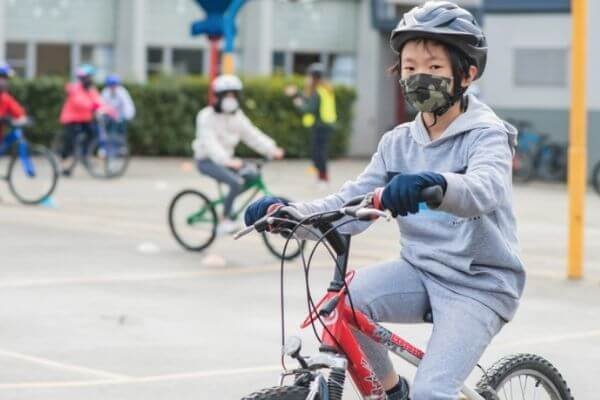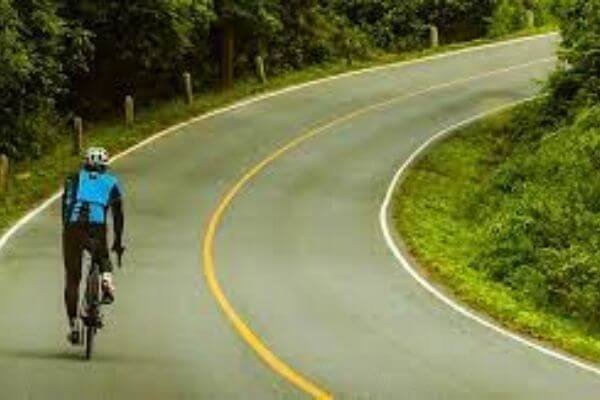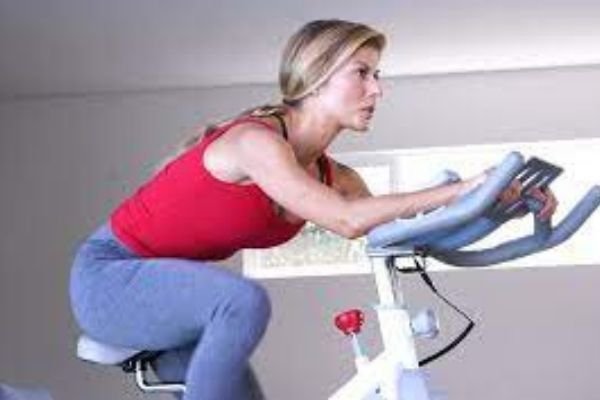Bicycle Safety Rules and Equipment for Kids and Adults

The bicycle rider’s brain provides the best bicycle safety equipment. Wearing protective equipment and knowing safety rules become supporting actions.
A rider can follow existing bicycle safety rules that will immediately keep him safer in traffic. Even if a bicycle rider is 100% right, he will still be hurt in any confrontation with a car. He is at a weight disadvantage against a 2,000-pound vehicle.
Wear Bicycle Safety Equipment
- A bicycle helmet. It is nearly impossible to go down without whiplashing one’s head into the pavement. A helmet is designed to be destroyed before a skull is because skulls are fragile. Helmets weigh very little and can even streamline a fast rider to a little faster speed.
- Gloves. It is natural to protect one’s face during a fall by pressing away with the hands. It gives an exceptional case of road burn to the palms if there is nothing between them and the road surface. Padded gloves can reduce compression stress from holding the handlebars on long rides. Gloves can wipe broken glass from the tires before it can work deep when one hits a patch of the cast-off bottle.
- Mouthguard. It is the energy that is transmitted to a boxer’s brain that knocks him out. The same type of guard used in contact sports will stabilize the jaw and pad the teeth from clenching. There are mouth guards with central vents that don’t affect breathing or spitting.
- Body armor is mainly designed to spread the effect of hitting something sharp, like a stone on the road. Shin, knee, or elbow guards protect those frequently scraped joints. The goal is to put something between one’s skin and the road.
- Flags, lights, and reflectors. Drivers tend not to see what they are not expecting, which frequently means a bicycle on the roadways. Use anything possible to increase one’s road presence. Flags come in white or orange for high visibility. The stanchion raises the flag for a larger cross-section. Use the most prominent headlight available and the blinking rear light that identifies a bicycle. Reflectors on helmets, jerseys, spokes, or pedals move in an irregular pattern, drawing the attention of drivers.
Follow Bicycle Rules for Rider Safety
Ride a bicycle with traffic. Riding against traffic only adds the speed of the bike to the speed of the vehicle. For example, consider a car traveling at 25 mph and a bicycle touring at ten mph. Riding towards the car will yield a 35 mph crash. Riding with the traffic will produce a 15 mph crash. Slower-speed crashes are more survivable.
Crosswalks are for pedestrians. Stop, look both ways for traffic and walk the bike across only when safe. Car drivers are so prepped to look for vehicular traffic that they don’t see bicyclists. By understanding that a rider is invisible to drivers, a rider will make better safety choices.
Hand signals are how the cars know what the bicyclist plans to do. For territories that drive on the right side of the road, this is a view of the rider’s back. It is of the rider’s front for places that operate on the left side of the road. Always signal with the arm toward the center of the road. Give drivers all the help possible to allow them to get around the biker.
Children can be taught to evaluate their surroundings critically. Talk about rider safety in advance to establish behavioral guidelines for those times that being late or being emotional might cause them to forget. A rider can avoid more injuries by riding safely than by all the safety equipment he wears.
The rider’s brain is his best safety equipment. Be seen and avoid other traffic because cyclists can’t depend on drivers to do the safest thing.





